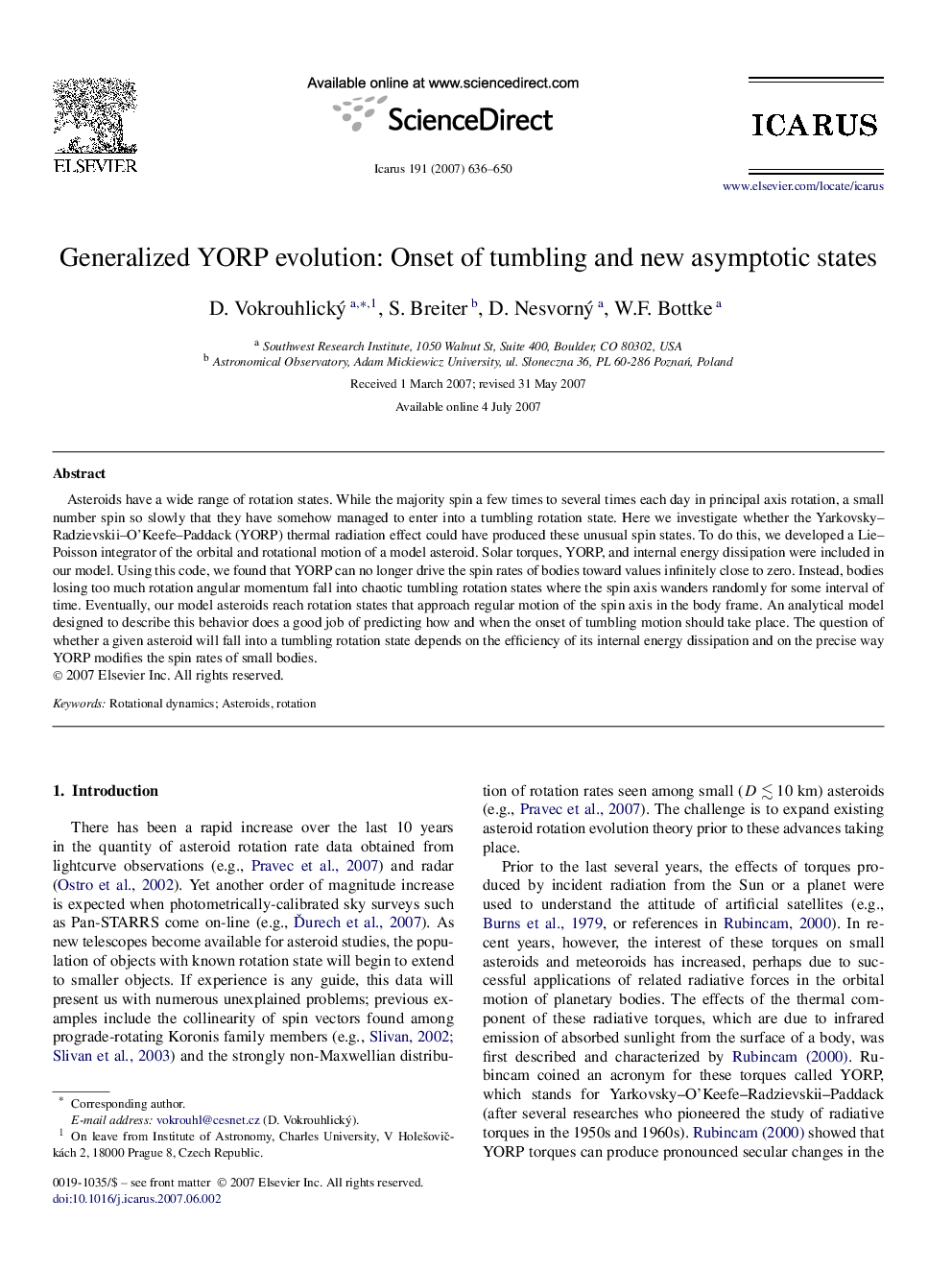| Article ID | Journal | Published Year | Pages | File Type |
|---|---|---|---|---|
| 1775478 | Icarus | 2007 | 15 Pages |
Asteroids have a wide range of rotation states. While the majority spin a few times to several times each day in principal axis rotation, a small number spin so slowly that they have somehow managed to enter into a tumbling rotation state. Here we investigate whether the Yarkovsky–Radzievskii–O'Keefe–Paddack (YORP) thermal radiation effect could have produced these unusual spin states. To do this, we developed a Lie–Poisson integrator of the orbital and rotational motion of a model asteroid. Solar torques, YORP, and internal energy dissipation were included in our model. Using this code, we found that YORP can no longer drive the spin rates of bodies toward values infinitely close to zero. Instead, bodies losing too much rotation angular momentum fall into chaotic tumbling rotation states where the spin axis wanders randomly for some interval of time. Eventually, our model asteroids reach rotation states that approach regular motion of the spin axis in the body frame. An analytical model designed to describe this behavior does a good job of predicting how and when the onset of tumbling motion should take place. The question of whether a given asteroid will fall into a tumbling rotation state depends on the efficiency of its internal energy dissipation and on the precise way YORP modifies the spin rates of small bodies.
